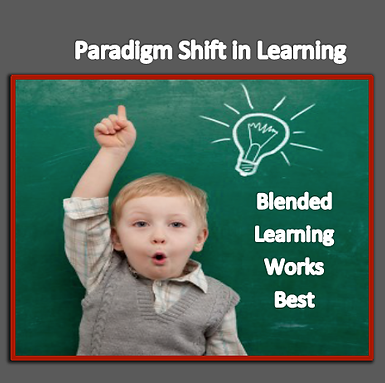B
Madison County Schools
Lended Learning
Blended Learning:
O.K. we hear the buzz word blended learning, so what is it?
Blended Learning is an approach that combines face to face classroom methods with computer integrated instuctional. As of day, there is no cookie cutter model or a single agreed upon definition for blended learning. Every classroom looks different, depending on the needs of the students. Basically when thinking of blended learning think of changing the traditional set up in the classroom, and using technology as a tool for learning during instruction rather than an add on or a supplemental role that technology has been in the past.
The term "blended" encompasses a wide spectrum of possiblities.


Blended Learning:
Things to think about
-
Create learning opportunities to start before class
-
Create learning opportunities for studnet to review after class
-
Encourage contace between, students, parents, and teachers
-
The role of the teacher
(the teachers work occurs before the classtime, they just facilitate during classtime, students are working) -
Encourage Collaboration
-
Use multiple forms of communication
-
Use multiple types of digital resources
-
Purpose and process of learning
-
Use active learning techniques
-
Use multiple formative assessment techniques
-
Allow for diverse ways of learning and demonstration of that learning
-
Communicate high expectation
-
Give valuable feedback promptly
-
Watch for misconcepts and clarify confusion promptly
-
Keep online information current and up to date for anytime/anywhere learning that can occur 24/7

Blended Learning breaks through the walls of traditional instruction and opens a new whelm of traditional instruction and opens a new whelm of teaching and learning that can occure 24/7. Blended Learning is a student-centered approach that effectively uses various delivery modes in an interactive learning environment. Teachers may use variations of blended learning due to course content, learning objectives and learners' profiles. The main focus of change is the classroom shifts from a presentational format to one of active learning. the learners are placed in a situation that compels them to think, speak, create, and reflect. The teacher can use interactive content to create a classroom of high interest, learner individualization, real world relevancy, and authentic assessment.
Taken from: SagaEducators.org; July 20, 2013